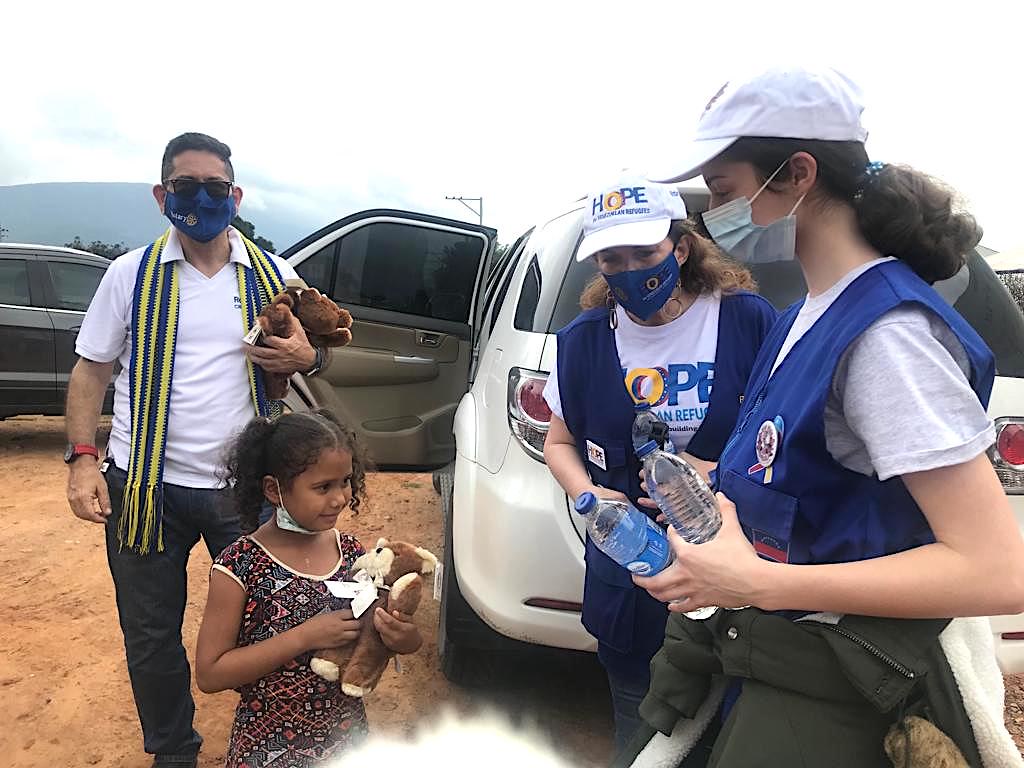
Humanitarian aid in Colombia is being compromised, according to the latest report from the United Nations Office for the Coordination of Humanitarian Affairs (OCHA). Published on Monday, April 15, the report highlights the challenges faced by humanitarian workers, particularly regarding their access to vulnerable areas in the country.
According to ReliefWeb, the humanitarian information portal of the OCHA, 8.3 million people, or 15.7 percent of the population, require humanitarian aid in Colombia as of March 2024. Unfortunately, the populations most deprived and in need are located in precisely the most dangerous and isolated regions of the country, posing additional challenges to delivering aid.
Humanitarian aid under threat
The OCHA report for 2023 highlights several vulnerabilities and insecurities in the network for distributing humanitarian aid in Colombia. According to the report, there were 240 incidents related to obstructing access, marking a 51 percent increase from 2022. Nearly 60 percent of these incidents were concentrated in five departments, with Norte de Santander alone accounting for 52 of the events, followed by Nariño, Antioquia, Guaviare, and Arauca.
The common denominator among these regions, which are widely scattered, is their infiltration by illegal armed groups, posing multiple threats to the local communities’ livelihoods, as well as to humanitarian aid and public services.
The OCHA report details 84 events of mobility restrictions on humanitarian convoys, 67 incidents of threats and violence against humanitarian personnel, and 45 events where military operations impeded humanitarian work. Additionally, 13 vehicles delivering aid were stolen last year, marking a 44 percent increase from 2022.
Among the primary threats are the guerrilla groups ELN, EMC, and other dissident factions from the former FARC, which are very active in Norte de Santander, Nariño, Arauca, and Guaviare. In Antioquia, guerrilla groups, as well as the powerful Gulf Clan, Colombia’s leading drug cartel, are among the primary threats.
In addition to these figures, the National Medical Mission Board, a platform monitoring medical access in the country, reported 511 violent acts against medical personnel in 2023, including 140 linked to the Colombian armed conflict.

Relief needs in Colombia
These disruptions to humanitarian aid in Colombia are compromising the basic necessities of over 1.8 million people across the country. According to data released by ReliefWeb, the country has 8.3 million people in need of humanitarian help, with 5.8 million lacking access to basic health facilities, 3.8 million lacking adequate housing, and 4.5 million lacking access to water, sanitation, and basic hygiene.
In recent years, the humanitarian situation in Colombia has been dramatically aggravated by the Venezuelan migrant crisis and migrant trafficking related to illegal immigration to the United States, which notably involves Haitian and Ecuadorian migrants.
This phenomenon is heavily burdening Colombia, which is already grappling with internal forced migration, primarily due to the internal conflict, significantly affecting rural, Afro-descendant, and indigenous communities. Consequently, according to ReliefWeb, internal refugees and migrants in Colombia represent over 60 percent of those in need of humanitarian aid.
Beyond the internal conflict, climate change and natural disasters have also had disastrous consequences on the humanitarian situation. Recently, the El Niño phenomenon, which severely affected rainfall patterns and provoked terrible droughts and wildfires across the country, has weakened water access for the most vulnerable populations. This is particularly the case in the La Guajira department, a desert region in the northwest of the country, which now almost entirely depends on fresh water deliveries from the rest of the country.
As a result, Colombia is dependent on foreign humanitarian aid to ensure emergency assistance to its residents. USAID, the US international development agency, provided Colombia with US$49.5 million last year, and US$145.6 million in 2022. Similarly, the European Union’s humanitarian aid contributed €28.5 million (around €30.8 million) to Colombia in 2023.
The Venezuelan migrant crisis has significantly contributed to the deterioration of the situation, as USAID disclosed that it had provided over US$616 million to Colombia since 2018, specifically to address the humanitarian crisis sparked by the Venezuelan exodus. Currently, ReliefWeb estimates that US$332 million is required to fully meet Colombia’s humanitarian aid needs.
See all the latest news from Colombia and the world at ColombiaOne.com. Contact our newsroom to report an update or send your story, photos and videos. Follow Colombia One on Google News, Facebook, Instagram, and subscribe here to our newsletter.

